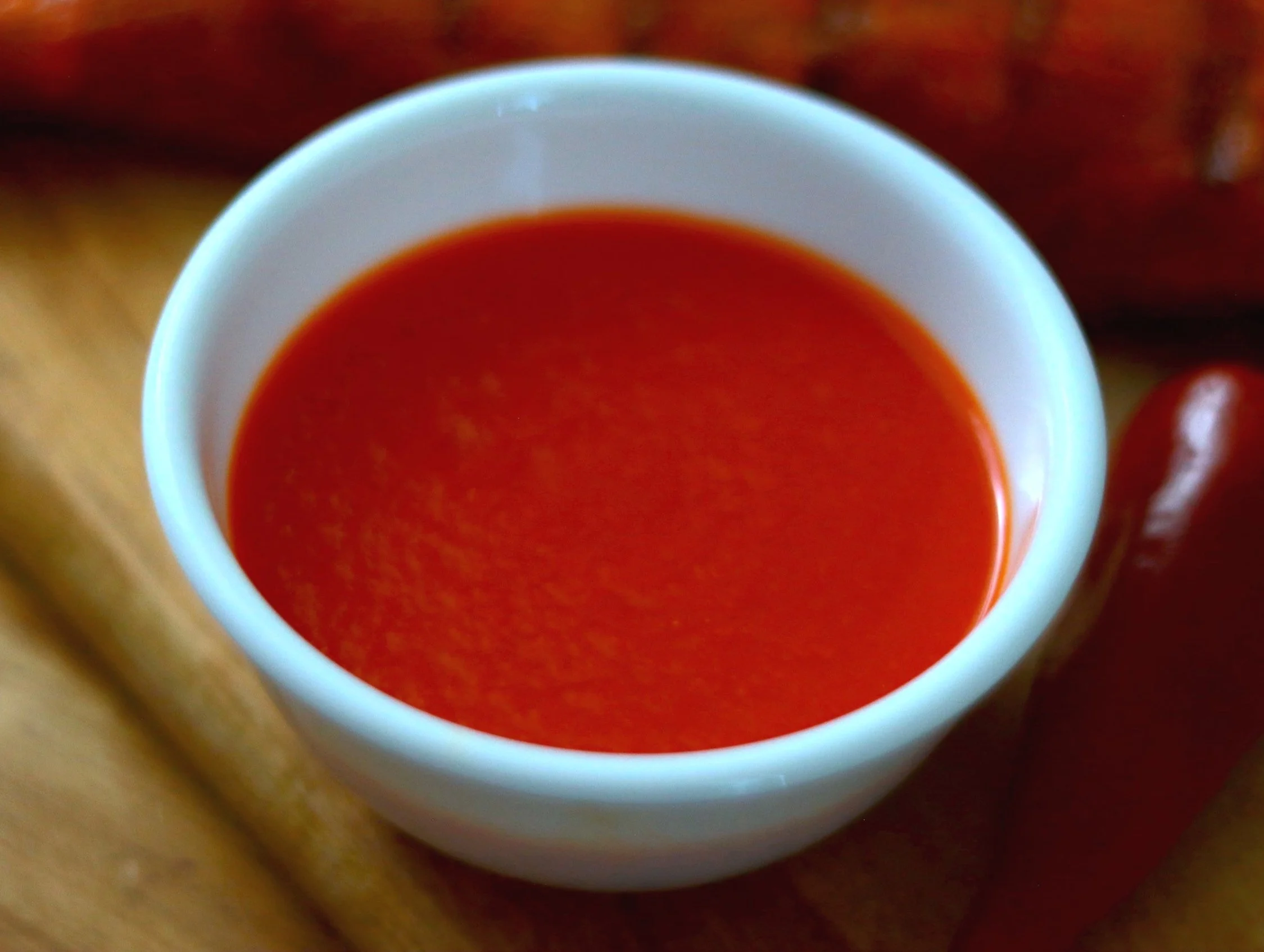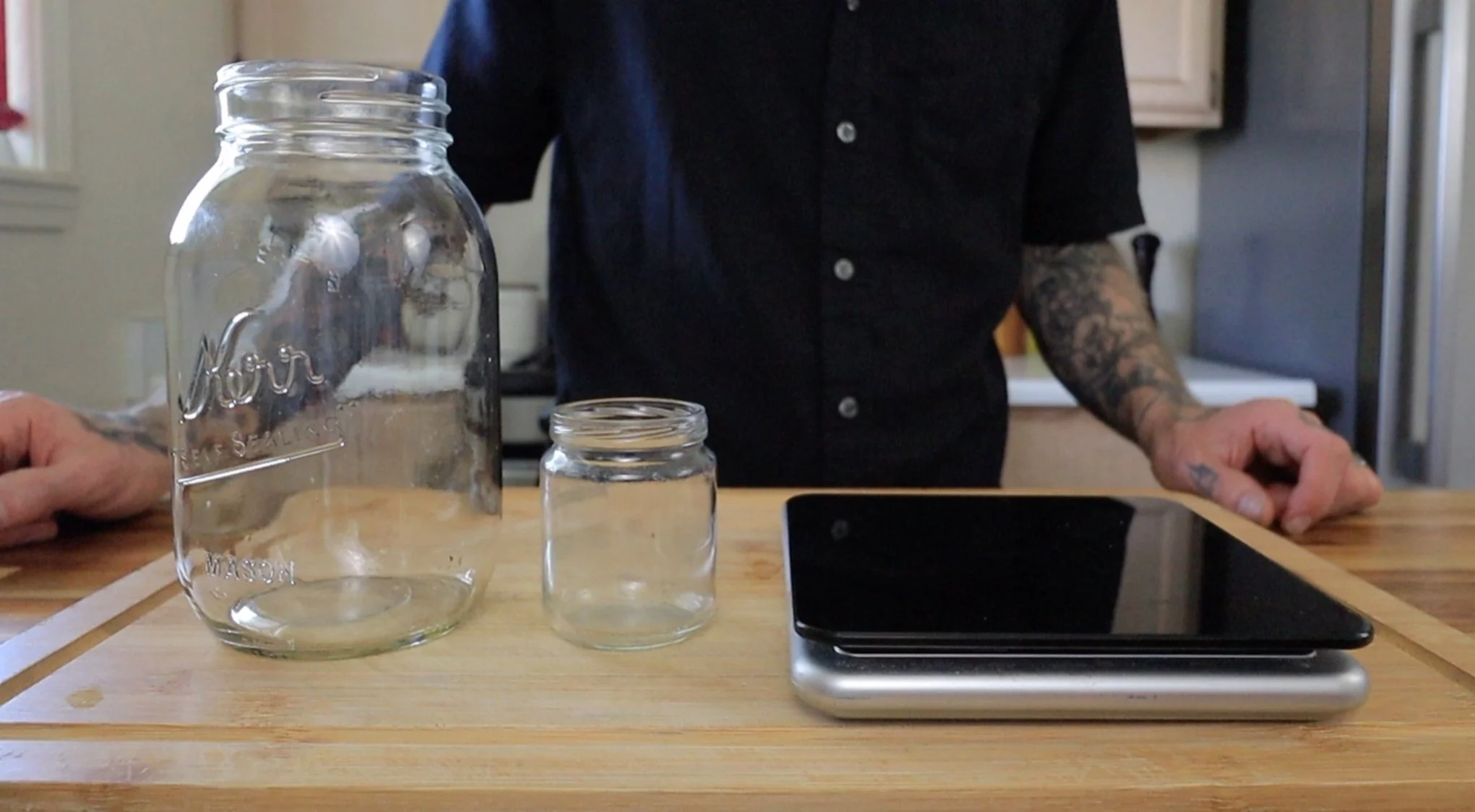Red Chili And Papaya Hot Sauce: Beginner’s Guide To Making Fermented Hot Sauce
I love the color that this hot sauce has. The flavor is as good as it looks.
This is a beginner’s guide to making brine fermented peppers and papaya for an amazingly delicious homemade hot sauce. If you’re new to lacto fermentation, this is a great and effective way to start out. The method for making the brine requires a kitchen scale. I prefer to weigh out ingredients for accuracy and consistency as I make a TON of hot sauce. The recipe is a smaller batch that can easily be scaled up.
This hot sauce is very delicious with the sweet/fruity flavor of the papaya mixed with the nice flavor of the red chili. There’s just the perfect amount of heat in this sauce. An everyday carry as I like to call it. The fermentation process I do is great for beginner fermenters and is very easy to follow. I have never had a failed ferment using this method and you can have just as much success. This is a brine ferment meaning I make a salt water solution that the ingredients sit in as they ferment. The brine is used when blending the sauce and to adjust consistency.
Ingredients:
10 red chili
1 maradol papaya (I used half for the recipe)
2.5 % brine (filtered water and fine sea salt done by weight)
Tools needed:
Sharp knife
Cutting board
Colander
Fermentation wieght/lid
32 oz mason jar
Blender
Mesh strainer
Digital kitchen scale
Small dish or ramekin
Wire whisk
Small mixing bowl
How to make it:
I use a small glass jar for a fermentation weight. It works great and I have been using it for years.
Wash peppers, remove stem and cut peppers into medallions. Cut ends off papaya and cut off the skin. Cut the papaya in lf to remove the seeds. Cut the fruit into pieces roughly the same size as the peppers. Seed removal from the peppers is optional.
Filtered water is my preferred water to use. If you don’t have filtered water, you can use bottled water. Try to stay away from tap water if possible.
Place the jar on the scale set to grams. Tare (zero) the scale and add the chopped papaya and peppers. Fill the jar with filtered water just to the bottom of the neck of the jar. Now, record that weight and multiply it by 2.5 %.
For example: If the ingredients plus water weigh 900 g, then multiply is by .025. You will get an amount that is needed for salt for the brine.
900 x .025 = 22.5 %
My scale doesn’t read decimal points, therefor, I round to the nearest whole number.
Carefully pour some of the water from the jar into a mixing bowl.
Place a small dish or ramekin the scale, tare it and add the calculated amount of salt. Pour the salt into the water in the mixing bowl and stir with the whisk to dissolve.
Pour the newly made brine back into the jar with the papaya and peppers. Place a fermentation weigh onto the ingredients to keep them submerged. It is very important to keep the ingredients submerged under the brine level. This is to keep mold from forming. That, and this fermentation method requires an anaerobic environment to work.
I found that using cheese cloth and a ring from the mason jar lid works perfectly for blocking out contaminants. The glass dish is to catch any overspill.
Place a lid with an airlock onto the jar. If you don’t have one, place a coffee filter or cut cheese cloth over the jar opening and use a mason jar lid ring to keep it secured. This is to keep the ferment from getting containments or fruit flies in it. This is to be kept at room temperature so find a spot on your counter or pantry to let ferment. Find a place that is away from direct sunlight as well. I have a spot in my pantry that stays a consistent 68-72 degrees which is optimal temperature range for lacto fermentation. I fermented mine for about a month and a half. You can go as long 3 months or as little as 2 weeks. I find that is all about your taste and how “funky” you want this to taste. Lacto fermentation adds a nice sour flavor as well as acidity to the ingredients. Plus, I find that I makes the papaya and peppers taste better.
Fermentation signs should happen around day 3 or 4. This will look like tiny bubbles forming that will collect on the ingredients themselves and on the surface of the brine. This is the lactic acid bacteria feasting on the natural sugars in the papaya and peppers. The by product is co2 and lactic acid. This is a great sign that your ferment is going along nicely. Towards the 2 or 3 week mark, it may form a yeast on the surface of the brine. This is normal and won’t be harmful if ingested. It typically looks like a white film that sits on the top surface of the brine. I do find the taste to be undesirable, however. Before making the sauce, skim off any yeast with a spoon or small ladle.
Once the fermentation period is done, I check the pH of the brine. It should be less than 4.6 pH to be considered safe to consume. Generally, my fermented peppers are around 3.6 when the fermentation period is done.
If you want to keep the good bacteria alive, skip any cooking and proceed to blending the sauce. This will slowly keep fermenting when held in the refrigerator and may build pressure in the container you’re storing the sauce in. Release any pressure if present weekly.
I typically cook the sauce to stop the fermentation process. When I ferment ingredients for the sake of making sauces, I ferment for flavor. My go to is sauerkraut for when I want the good probiotics created from the fermentation process.
Place all ingredients in a a small stock pot. Bring to a boil, reduce heat and keep on a low heat simmer for about 10 minutes to soften the ingredients. I recommend keeping a lid on the pot as the ingredients simmer to help keep the fumes under control. These red chilis aren’t too spicy, around the same level as a mild jalapeno. Regardless, it still can irritate your nose, eyes and throat and is good practice to keep the pot covered while simmering the ingredients.
Once the ingredients are softend, turn off the heat and let sit for 5 minutes. Add the ingredients to the blender. I hold back some of the brine before blending to see where the sauce consistency is. Add more brine if desired for a thinner sauce.
I like to have very smooth sauces. To get a smooth sauce, strain the sauce out after blending through a mesh strainer over a mixing bowl.
Store the sauce in mason jars or hot sauce bottles. If desired, check the pH once again once the sauce has cooled to room temperature. Add about 2 tsp vinegar if you want to lower the pH some. Keep in mind that vinegar will slightly alter the flavor profile. I recommend you keep parchment paper under the mason jar lid if you’re using one as the acidity of the sauce will eat away at the lid material possibly contaminating your sauce.
I typically keep my sauces refrigerated. Thought a sauce with a low pH of 3.4 can be considered shelf stable. Do so at your own discretion.
Enjoy! I have hot sauces that I made about a year ago still in my refrigerator that are still going strong! In other words, this will keep for a good amount of time.
Logan



